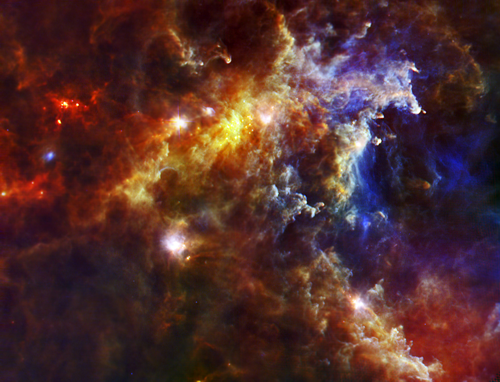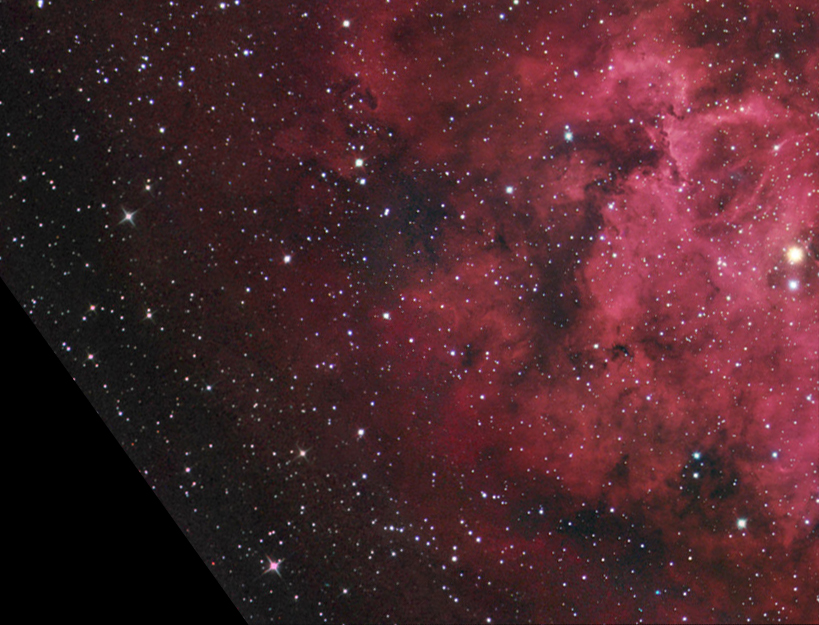| Basic Information | |
| What is this? | The Rosette Nebula |
| Where is it in the sky? | In the constellation of Monoceros the Unicorn |
| How big is it? | The image is about 65 light years across |
| How far away is it? | About 5500 light years |
| What do the colours represent? | The red is cooler gas and dust, while the blue is warmer material |
Downloads
See this object in:
The Rosette Nebula is a cloud of dust containing enough gas and dust to make about 10,000 stars like our Sun. In the centre of the nebula, and off to the right hand side of this image, is a cluster of hot, bright young stars. These are warming up the surrounding gas and dust, making it appear bluer. The small, bright white regions are cocoons of dust in which huge stars are currently being born. These “protostars”, each one of which will probably become a star up to ten times more massive than the Sun, are heating up the surrounding gas and dust and making it clow brighter. The smaller, redder dots on the left side and near the centre of the image also contain protostars, but these are smaller, and will go on to form stars much like our Sun. Click here for the highest-resolution version of the image.
Just as the centre of the nebula contains bright young stars, in a few tens or hundreds of millions of years these stars will have died, but the protostars will have evolved into fully-fledged stars in their own right. In this way, the star formation will move outwards through the nebula.
This image was taken as part of the “Herschel imaging survey of OB Young Stellar objects”, or HOBYS for short. The hottest and brightest stars are called “OB stars”, and this project is targetting the formation and evolution of these giants. While less common than their lighter, fainter siblings such as our Sun, OB stars provide a lot of light and can have a significant impact on their environment. After a few million years, when they have consumed their vast amounts of fuel, these stars will die in supernovae, distributing their material throughout the neighbourhood and seeding further generations of stars.
The images below show this protion of the Rosette Nebula as seen in far-infrared (left) and optical light (right). The image on the right, taken by Rob Gendler, shows only “hydrogen alpha”, which means that it excludes most of the light except that emitted by hydrogen gas. Showing just the hydrogen-alpha light means that the finer features of the nebula show up more clearly, but the bright stars in the centre do not appear as bright as they would if the full range of visible light were used. Some of the features are visible in both images, particularly nearer the right of the image where the material is warmer, causing the gas to emit more in visible light. However, what is glowing in infrared light as seen by Herschel is opaque in visble light, meaning that bright features in the left image correspond to darker regions of the right image.

Far-Infrared: Cold dust (Herschel) 
Hydrogen-Alpha: Warm gas (Rob Gendler)
The video below shows the Herschel image overlaid on the image of the full nebula taken in hydrogren-alpha light.
.
